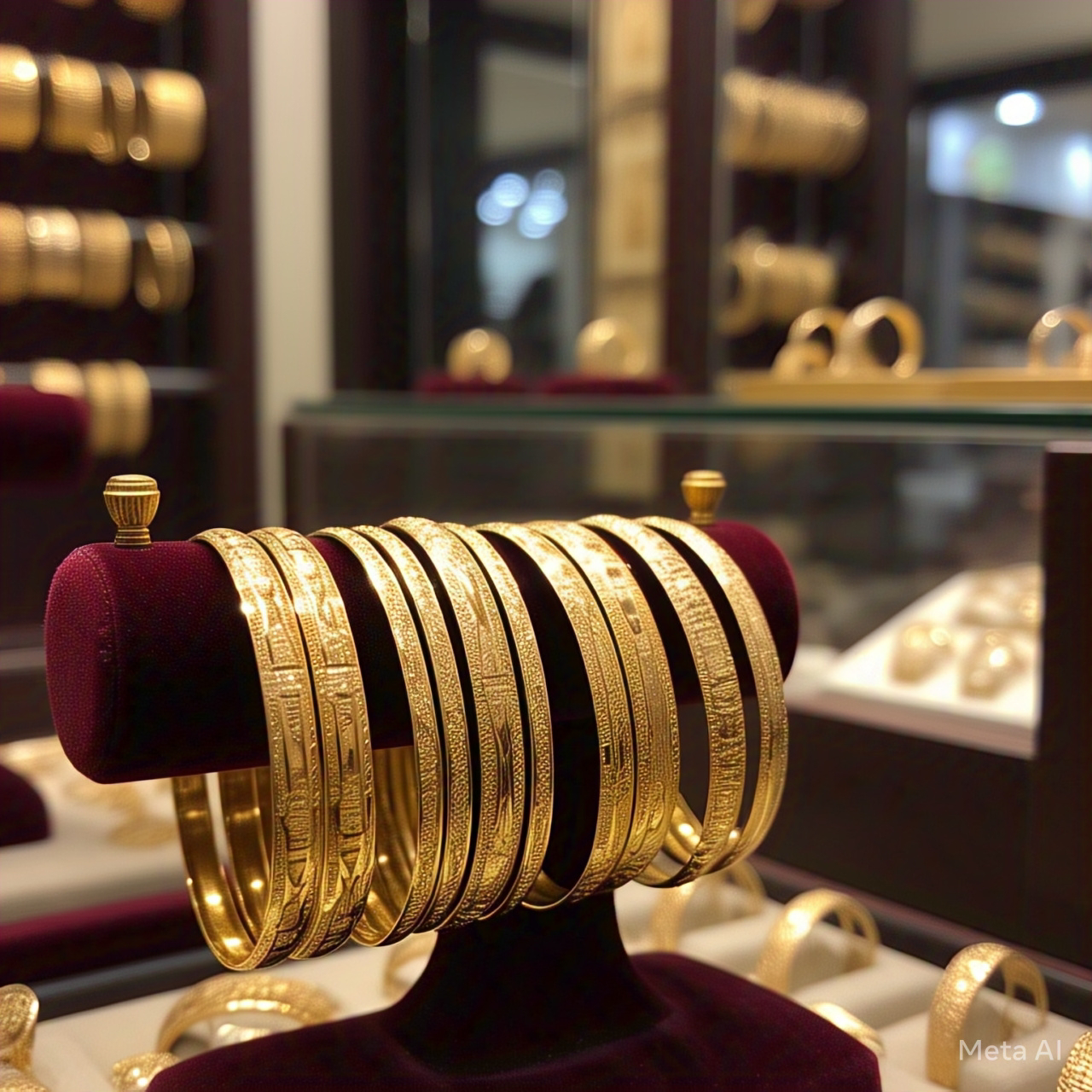GOLD - A METAL LOVED BY ALL
 |
Gold is a chemical element with the chemical symbol Au and atomic number 79, derived from the Latin word "aurum" meaning "shining," "dawn," or "gold." Each gold atom has 79 protons in its nucleus and 79 electrons. Gold is highly valued for its beauty, rarity, and resistance to corrosion, making it suitable for jewellery, currency, and various industrial applications.
FACTS ABOUT GOLD
- Gold has been valued over the years for a variety of reasons. No magnificent yellow metal rusts or loses its lustre like gold does. Gold is aesthetically pleasing in terms of colour and brightness, extremely flexible, and resilient to the point of near indestructibility, extremely pliable and typically found in a relatively pure state in nature. It conducts electricity and heat very well.
- Throughout history, gold has been used to pay for goods and services due to its rarity, durability, colour, and chemical inertness. Today, it serves as the foundation for international monetary exchange.
- Industry uses about 11% of the total amount of gold mined. Due to its intrinsic qualities, gold finds application in the fields of medicine, electronics, automation, defence, and aerospace.
- Jewellery - 51%
- Gold Coins and Bars - 25%
- Central Bank Reserves - 15%
- Electronics and Industries - 7%
- Global Backed Exchange Traded Fund - 1%
- Dental and Medical - 1%
- Space suit visors are Gold tinted
Every igneous rock contains trace amounts of gold. An estimated 0.0005 parts per million are found in the Earth's crust. The native state is where it primarily happens.
In India, gold can be discovered in the states of:
- Karnataka, Rajasthan and Andhra Pradesh, with Significant reserves also present in Jharkhand Odisha.
- Karnataka - Hutti Gold Mines, Kolar Gold Fields, Gadag and Hira - Buddini
- Andhra Pradesh - Ramgiri Gold Field and Chigargunta - Bisanatham.
- Jharkhand - Parsi Gold Mine and Lava Gold Mines
- Odisha - Syndergaard, Nab rangpur Keonjhar and Sambalpur.
- Uttar Pradesh - Sonbadhra District
- Maharashtra - Madhya Pradesh.
- Geological Survey of India, China, Russia, Australia are the largest Gold producers in the World.
- Bright, somewhat orange-yellow in appearance, solid at room temperature
- 19.3g/cm2 is the density.
- Melting Point: 1064.18°C
- Point of Boiling: 2856 degrees
- Conductor: An excellent heat and electrical conductor
- Softness: The metal is rather soft.
Gold has enormous religious and economic significance in Indian culture. Gold, a symbol of purity and divinity, has been intricately woven into Indian civilization since ancient times. In addition to being favoured as jewellery, it plays a crucial role in religious ceremonies and rituals. Gold jewels, which are frequently passed down as family heirlooms and represent wealth and rank, are significant at Indian weddings. Without a dot of gold in the Thali/Mangal sutra, a wedding is incomplete. Gold is a valuable commodity in every home. Gold is necessary for all ceremonies, regardless of wealth or social level. Gold is regarded as a financial investment.
Metals such as iron, lead, copper, and aluminium are prone to corroding over time, making them unsuitable for coin storage. Gold is resistive to rust. Melting it over a flame makes it simple to work with and stamp like a coin. In addition, gold might not be used right away if a modern currency collapses because people would be fighting for their basic necessities and panicking, but it would eventually be used to pay for products and services. The sensible option for this exchange is gold. In the event of a catastrophe that renders paper money and the infrastructure supporting it obsolete, we will probably switch back to gold. People purchase gold in a variety of ways.
- Coins
- Bars
- Ornaments
- Jewellery
- Gold stocks
- Gold Schemes
- Gold Bullion
- Gold FoFs
- Sovereign Gold Bonds
- Mutual Fund
- Digital Gold
- Gold ETFs
Key Factors that affect the price of Gold
- Geological Events: Trade tensions, conflicts, and changes in government can encourage investors to seek out gold as a safe haven, which drives up the price of the metal.
- U.S. Dollar Value: Since gold is traded internationally in dollars, a weaker dollar raises the price of gold.
- Inflation: Higher inflation frequently prompts central banks to expand the money supply, which makes gold a desirable investment.
- Interest rates: Gold is more attractive than other investments when interest rates are lower.
- Supply and Demand: Gold prices are also influenced by increased purchasing when prices decline and lower demand when prices increase.
This phrase might mean different things. This saying is appropriate while purchasing gold to verify its purity. When purchasing or investing in gold, there are a few things to keep in mind. We ought to examine the gold's quality. There are many carats available, including 14K, 18K, 22K, and 24K. The amount of pure gold in an alloy is indicated by its carat value. To ensure its purity, always look for the stamped hallmark that indicates its carat value. Happy Buying Gold !




Comments
Post a Comment